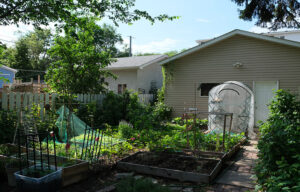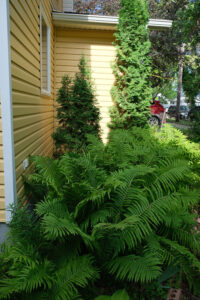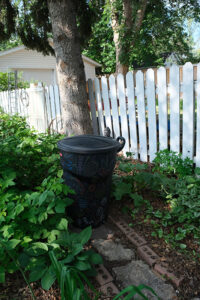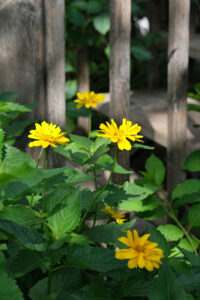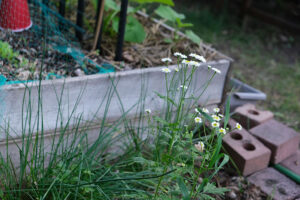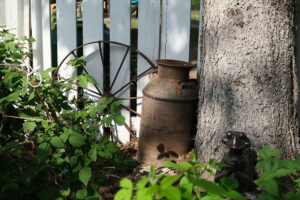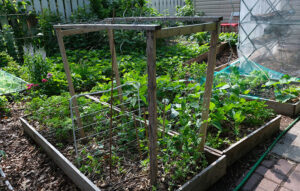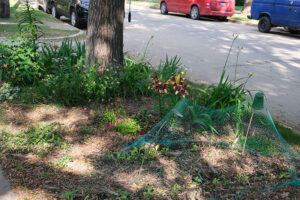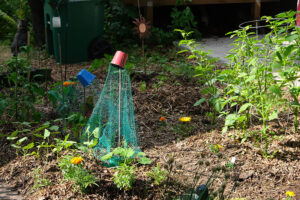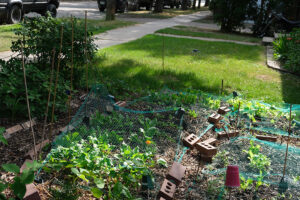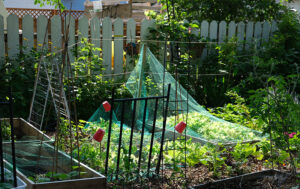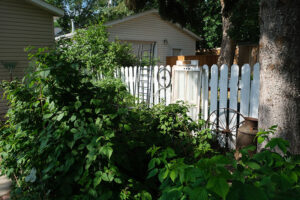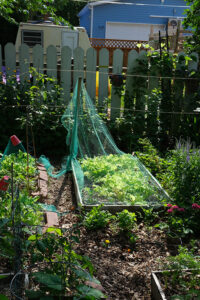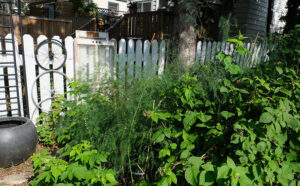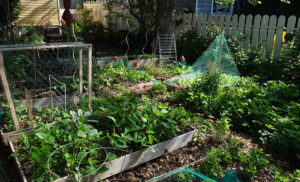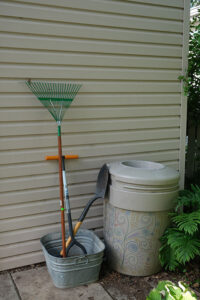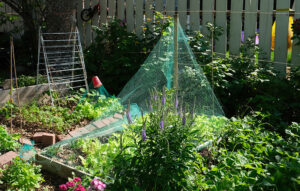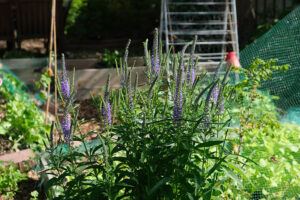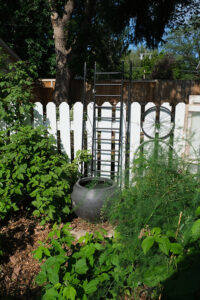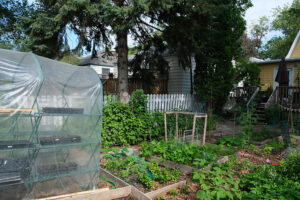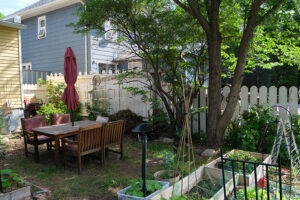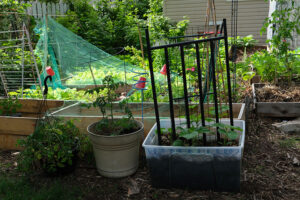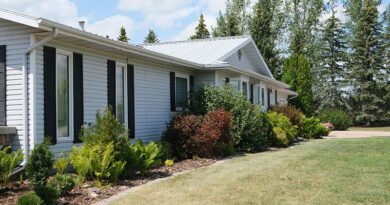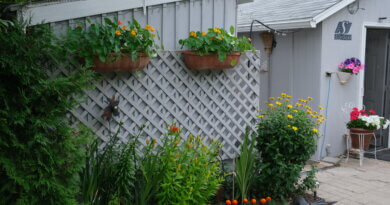Garden of Maxine Panchuk & Matthew Jacoby
Saskatoon, Saskatchewan
Story and pics by Shauna Dobbie
Maxine and Matthew and their cat, Quincy, have a slice of garden that is in the old area of Nutana, just across the river from the business area of Saskatoon, Saskatchewan. It isn’t tiny by city standards, at 33 feet wide by 140 feet deep, but it is hardly the expansive prairie that surrounds the city. To make up for it, they’ve stuffed the yard – and the boulevard in front – with as many flowers and vegetables as it can hold since moving in eight years ago.
Most of the work is taken on by Maxine, an elementary school teacher by day. Matt is no stranger to things that grow; he works in urban forestry for the City of Saskatoon. He likes to relax in the garden but helps Maxine with watering and the jobs she hates to do, like breaking down branches and wrapping up hoses nicely.
When they started the garden, “it was sad grass and weeds.” There were a couple of trees, some ferns and a Virginia creeper covering the garage. Everything else you see today was planted by Maxine, either grown from seed by her, purchased or traded with other gardeners.
“I try to garden in a way that is carefree and creative without creating waste — I try to compost or reuse or upcycle as much as I can. I would describe our yard as an experimental edible jungle because I am always trying new growing practices or techniques and producing as much food as we can,” Maxine tells me. Her yard is a warren of raised beds and netting held up by bamboo stakes; of chicken-wire boxes and pieces of fence and every kind of trellis her artful mind has come up with. There is a greenhouse made of clear poly covering wire shelves. And here and there are big garbage bins, decorated with funky designs drawn with gel pens.
“When I first started gardening, I experimented more with different things but now I try to keep it simple and grow things that are easy, that we enjoy eating, and that can handle all the shade that we get.” She finds spots of sun to grow beans, spicy peppers and cucumbers and grows lettuce, beets and carrots in the shadier places. Fruits are not to be forgotten, though, and there are masses of raspberry canes and strawberries, plus haskaps, red currants and gooseberries. The netting helps protect against birds, which would make short work of all that fruit.
The garden is also filled with herbs for cooking and, as your eyes settle from the cacophony of edibles, there are several ornamentals. There are a number of hostas, Asiatic lilies, various types of irises (she tells me there are seven!), columbines, peonies, globeflowers and more. “They would probably look better if I quit digging them out, but I keep sharing with people I know,” she says, and it is like an apology. But how to apologize for this exuberance? Maxine has an unadulterated passion for gardening and it shows.
She is concerned about the Earth, and to cut back on water, she plants in furrows, so that the water collects in the depression, and relies on mulch. She collects her neighbours’ leaves to cover the garden without adding to the cost. When she waters, she does it in the morning when it is cooler, in hopes that it will sink into the ground before the sun burns it off.
“I find gardening to be a great way to practice mindfulness, destress, get movement and exercise, connect with others, be creative, and keep my brain engaged and active because there is always something learn and something new to try, and a way to grow delicious, affordable, healthy food that we don’t need to leave our house for,” Maxine explains, succinctly describing what gardeners across the country feel. “I love being able to just zip out to the yard to grab some lettuce or a tomato or a handful of herbs when I am making something. I love to eat lots of fruits and vegetables and there is no better flavour or quality than something that is fresh-picked from the yard, grown with love.”

